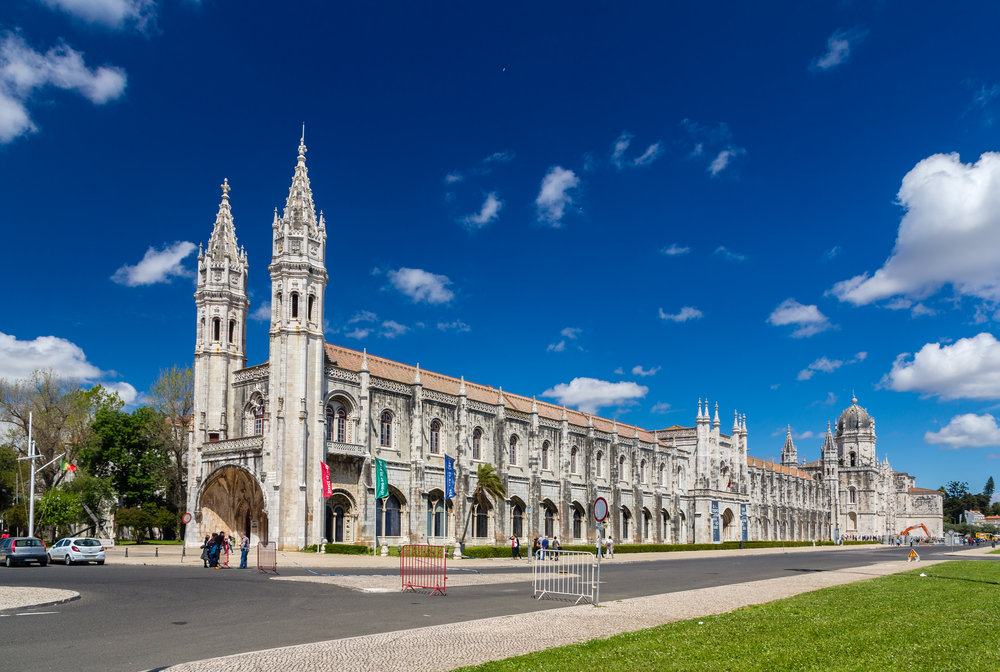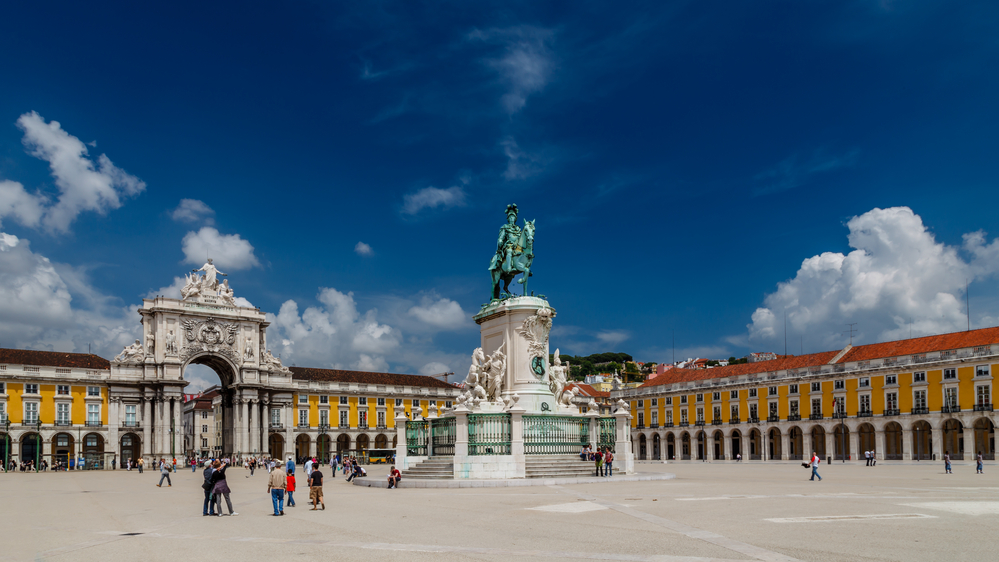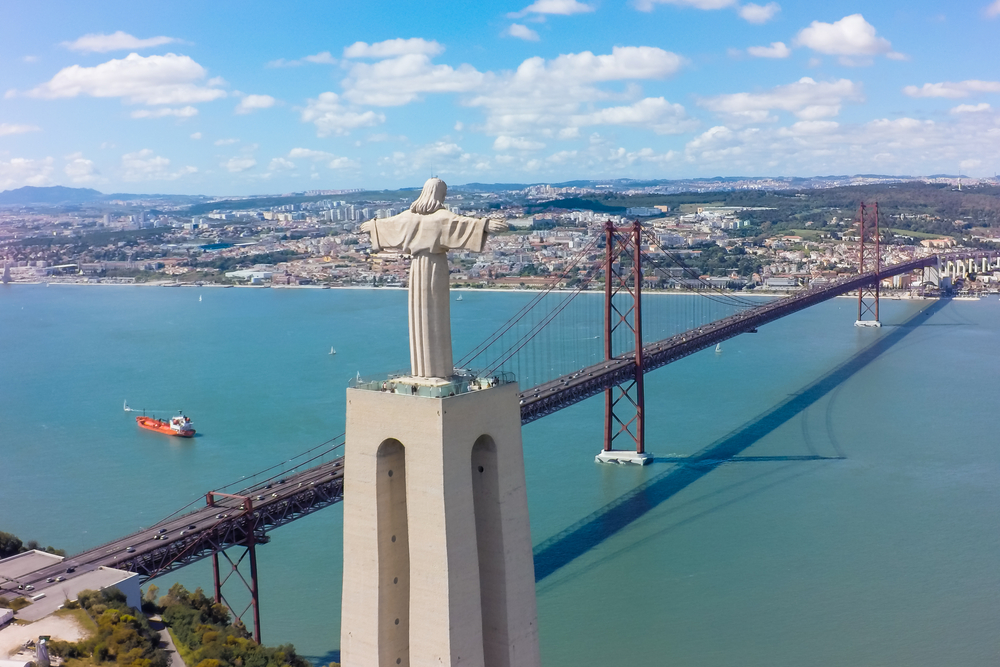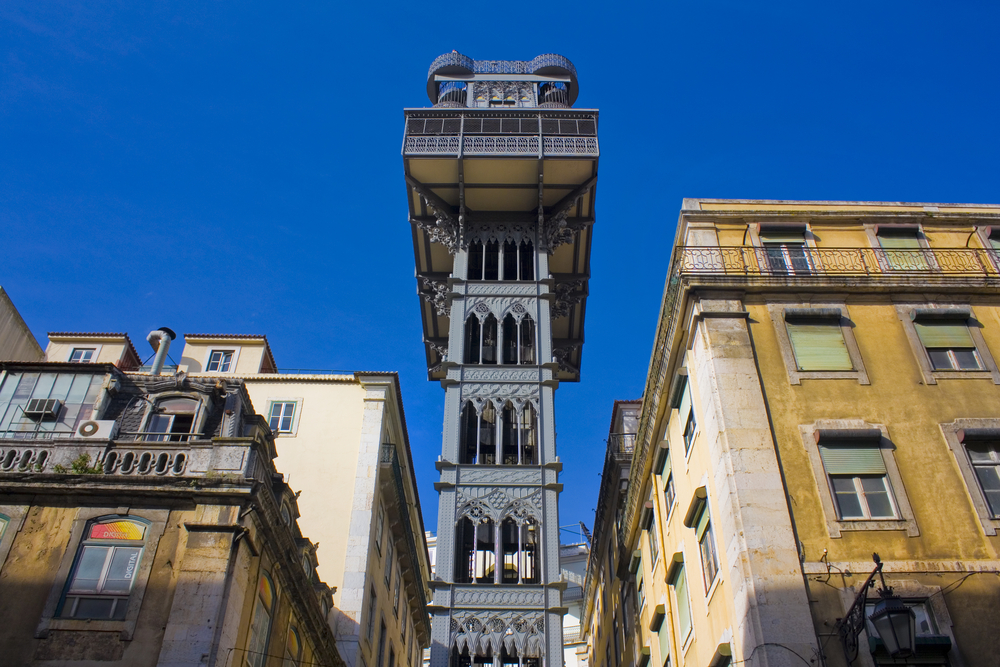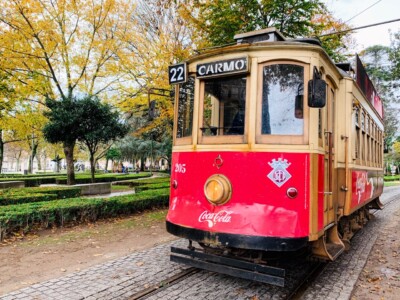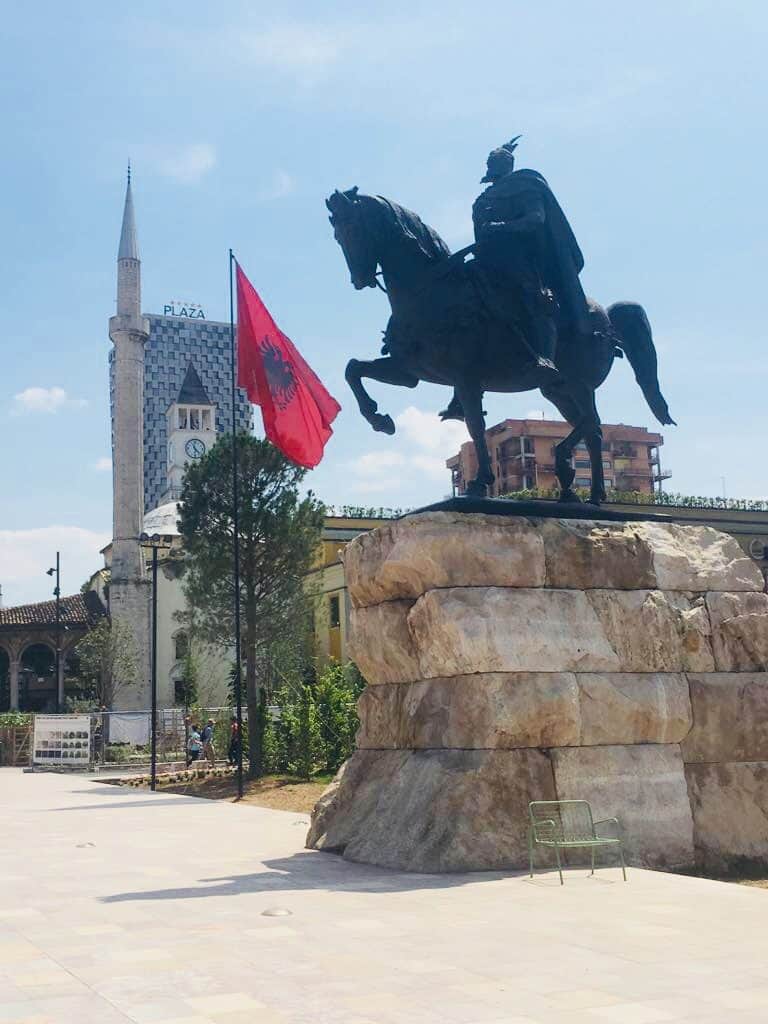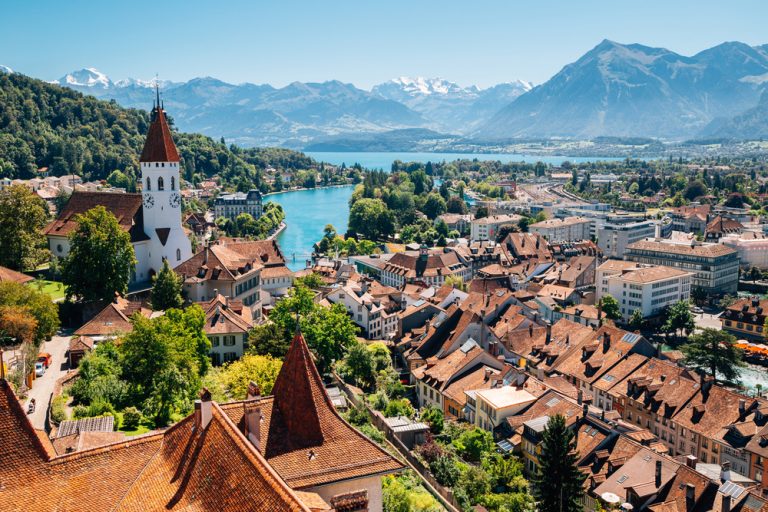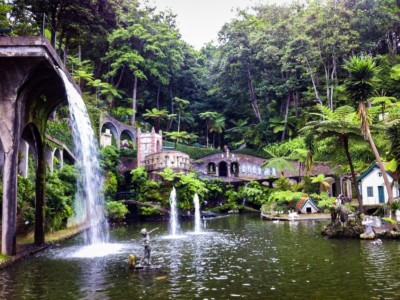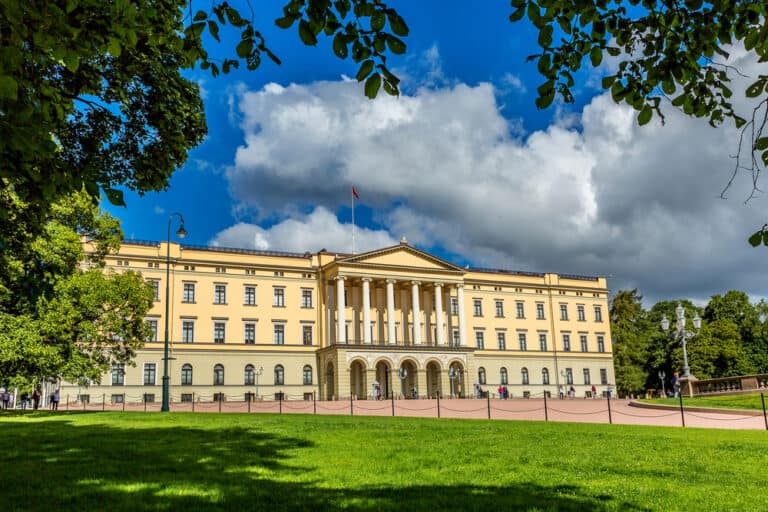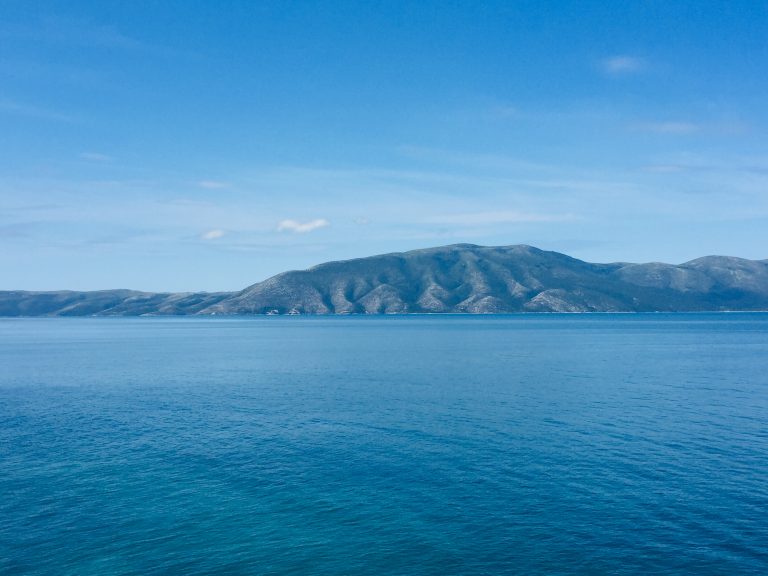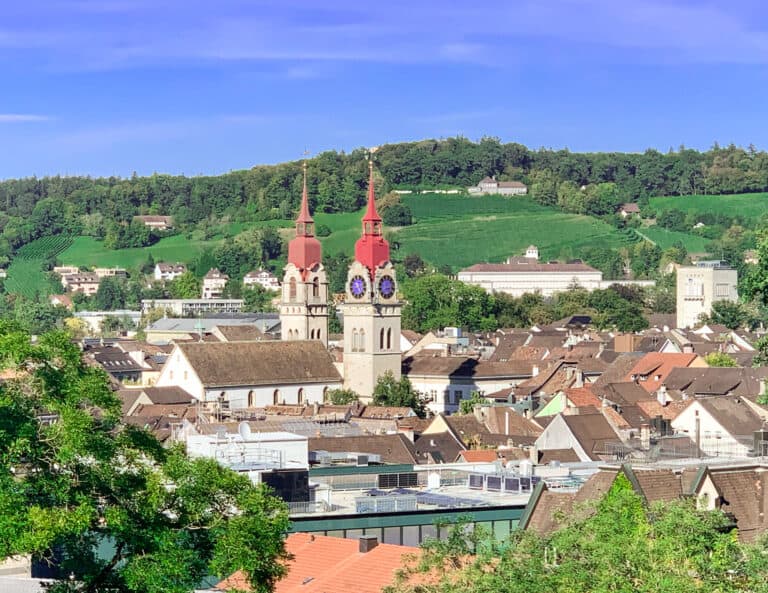Lisbon or Porto: which city to visit
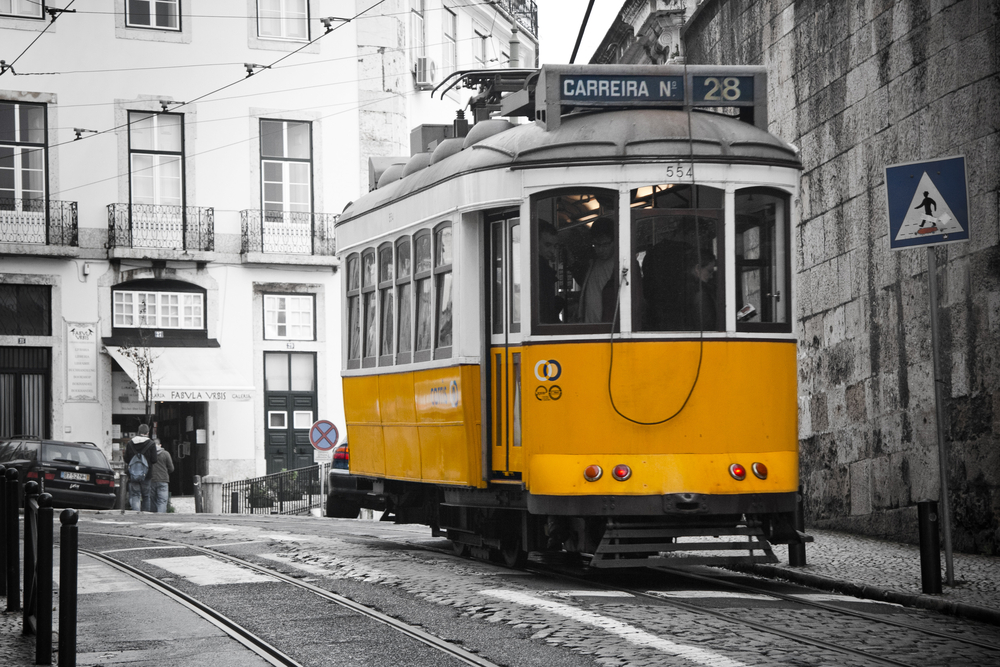
Lisbon, Portugal’s capital, and Porto, the country’s second city, are both popular destinations I would thoroughly recommend you visit. But if you were to choose, which city should you visit?
Lisbon or Porto?
It’s a common question: Lisbon or Porto? Which one is best for a city break?
It’s not an easy question to answer. Both are wonderful cities, and both have some amazing things to see and do.

The truth is it is very difficult to choose between the two. Although Lisbon is larger than Porto and arguably has more attractions and sights, the advantage of Porto is the centre is fairly compact. Consequently, many of the top things to see and do are in close proximity to each other.
And while Lisbon is home to the original Portuguese custard tarts, Porto is where you enjoy the nation’s fantastic range of port wines in its world-famous lodges.
Both are scenically stunning cities, packed with cultural and historical charm and a wealth of impressive landmarks.
This post compares and contrasts the two cities on several issues:
– the top things to do in Lisbon
– the top things to do in Porto
– unique and quirky things to do in each city
– location
– how to get there and how to get around
– the weather and climate
– when to visit
– food and drink
– budget and the cost of visiting
Lisbon and Porto?
Then again, if you have enough time on your Portugal trip, why not combine a short trip to both? A direct Alfa Pendular train connects both cities in only a few hours. A fast train takes just shy of three hours.
Although you’d only be scratching the surface, seeing both would at least give you a flavour of each of these fantastic cities. What’s more, it would also give you a good idea of what you could do on a return visit, which I am sure you will want to do after exploring Lisbon and Porto. And if you love train travel, this would be the perfect way to see both.
But if you do have to choose just one city, how about I outline some of the top attractions to help you make up your mind? I’ll then give you my take on how the two cities compare on the specific features.
And if you want to read more detail on either city, I have written separate posts on both Lisbon and Porto.
This post contains affiliate links
The top things to do in Lisbon
Below is a summary of some of the top things to do in Lisbon on a short break. For further information, see my more detailed post.
The top things to do in Lisbon
Enjoy great views atop the Elevador de Santa Justa
One of Lisbon’s top attractions, this unique wrought-iron structure opened at the turn of the 20th century. It has spectacular views of the Baixa and St George’s Castle.
Ride the iconic yellow and white trams and funiculars
One of the best ways to get around is on these old, charming modes of transport.
Explore the city’s oldest district
A maze of narrow – and sometimes very steep – streets, the Alfama district oozes charm. Home to delightful restaurants, intriguing walks, and fabulous eye-catching views, it contains some of Lisbon’s oldest landmarks.
Sample the nightlife in the Bairro Alto
Packed full of restaurants and bars, this area has a lot of charm and is an excellent place to catch some traditional Portuguese Fado music.
Admire the elegant squares in the Baixa area
Paved in traditional Portuguese square stone, the two to wander around are Praca Dom Pedro IV with the neoclassical Dona Maria II National Theatre, and the vast Praca Do Comercio. The latter overlooks the River Tagus and features the majestic Arco da Rua Augusta and the Dom Jose I statue.
Soak in the imperial splendour
Marvel at Lisbon’s rich history and varied geography on a scenic walk starting at the top of Parque Edwardo VII. Head down to the river, and take in the monumental Marques de Pombal, the tree-lined Avenida da Liberdade and Praca dos Restauradores with its large obelisk.
Step into the shoes of the explorers at Belem
Belem is where navigator Vasco da Gama embarked on his global explorations. And besides the 16th century Belem Tower is a monument to Prince Henry the Navigator. There are sweeping views over the river, the huge Christ monument, and the city’s suspension bridge (Ponte 25 de Abril).
Visit a monastery with UNESCO World Heritage Status
Belem is also where you’ll find the beautiful Jerónimos Monastery. Inside are the tombs of famous Portuguese, such as explorer Vasco da Gama and poet Luis de Camoes.
Marvel at the views from Lisbon’s own Christ monument
Take the ferry to Cacilhas, catch a taxi up to the monumental statue and see the fantastic views of Lisbon’s skyline and suspension bridge.
Explore one of the world’s largest Oceanariums
Head to Parque das Nacoes and check out the Oceanario de Lisboa, with its gigantic tank full of fascinating sea life. Also here is the city’s tallest structure, Torre Vasco da Gama, and many other fascinating attractions.
The top things to do in Porto
Here are some of the best things to do in Porto. See my separate post for more information to help you plan your trip.
The top things to do in Porto
Sample port wines at world-famous lodges
Book a tasting session at one of the many port wine lodges in the Vila Nova de Gaia area, which sits opposite the city’s old town. You can learn about the fascinating history behind arguably Portugal’s most famous alcoholic export.
Explore Porto’s central attractions
Awarded UNESCO World Heritage status, there is much to do in this picturesque area. Highlights include the vast central plaza (Praca da Liberdade), dominated by the city’s gigantic town hall, São Bento train station, which has perhaps the most beautiful entrance hall in a train station you’ll ever see, and the Torre dos Clerigos bell tower that you can climb.
Wander around the majestic cathedral complex
The Se do Porto cathedral crowns the hilltop in the Ribeira district. There are fantastic views across the city and the River Douro from the front of the entrance. Highlights include the stately interior, the cloister’s beautiful azulejos tiles, and the Episcopal Palace’s striking stairway, wall paintings, and glass dome.
Admire the views from the riverside
From both the promenade on the old city side (Cais da Ribeira) and the Vila Nova de Gaia side, you get fabulous views of Porto’s iconic suspension bridge (Ponte de Dom Luis 1). You’ll also see the traditional old boats (rabellos) that deliver port barrels to the lodges. The Ribeira side, with its delightful tiled townhouses, has fantastic restaurants, and really comes to life at night.
Walk across the bridge and take a cable car ride
If you have a good head for heights, you’ll get arguably one of the best views in Porto when you walk along the top of the Ponte de Dom Luis 1 to Villa Nova de Gaia. At the top there is the Teleferico de Gaia cable car station from which you can ride down to the waterfront and explore the port lodges.
Take a tram ride to the Atlantic Ocean
Located close to Palacio da Bolsa, vintage tram number 1 is a real adventure and offers something that even Lisbon can’t: a riverside ride all the way to the Atlantic and Foz do Douro.
Ride the old trams
Although Porto doesn’t have an extensive network of tram routes and anywhere close to the number of funiculars in Lisbon, there is still something special about them and the uniqueness they bring to the city. In central Porto there are two vintage tram routes: numbers 18 and 22.
Take a short funicular ride
The Funicular dos Guindais starts at the foot of the suspension bridge and takes you up to near Praca da Batalha. Here you will find the beautifully blue-tiled church Igreja de Santo Ildefonso.
These are just some of the many highlights of both Lisbon and Porto. As you can see, both the cities have plenty to commend them for a short break.
Now let’s compare and contrast the different features to help you decide which to choose.
Porto or Lisbon: location
Lisbon
Built on seven hills overlooking the Tagus river, Portugal’s capital is located at the top of the country’s southern half and within easy reach of the Atlantic Ocean. For this reason, it is very easy to get to the coast and some wonderful beaches. Costa da Caparica, Guincho, Estoril, and further afield, Sesimbra, are particularly notable.
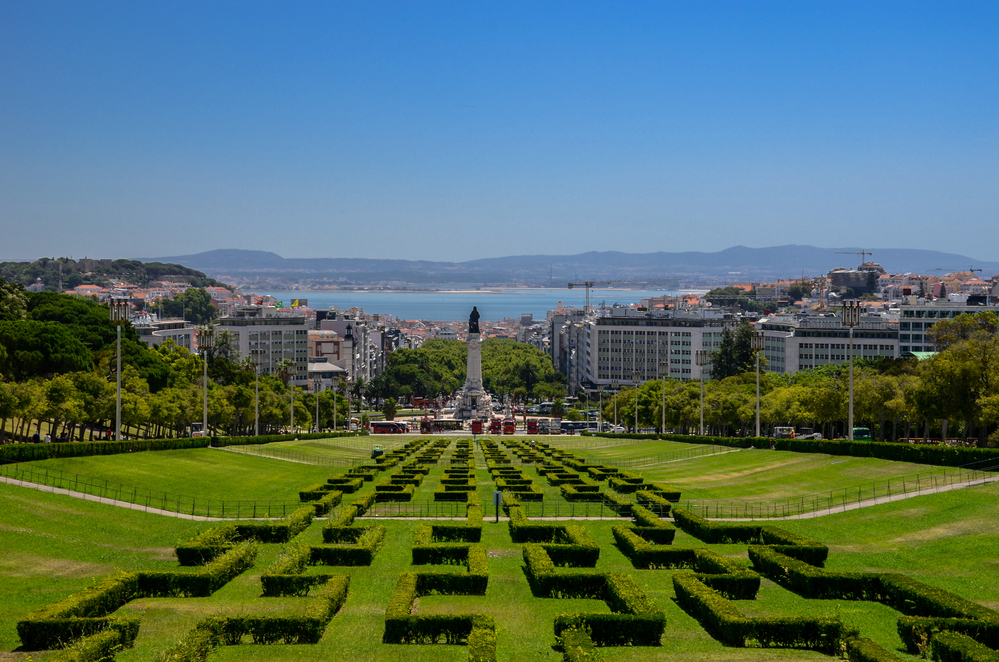
You can also get down the Algarve easily (e.g. Tavira) and all the beach attractions this region offers visitors.
If you are looking for history, Lisbon is also a great base to explore sites of interest, such as Evora, Mafra, and Sintra, to name just a few.
Porto
Located in the north of Portugal and also built around a significant river – in this case, the Douro – and close to the Atlantic Ocean, Porto is also within easy reach of good beaches, notably at Foz do Douro.

You can also reach the beaches on the Costa Verde, including those north of the city and south on the way to Aveiro.
Porto is slightly closer to Coimbra – home to Portugal’s oldest university – than Lisbon is. It is also an excellent base to explore historically significant cities to the north, such as Braga and Guimaraes. You can also get to the Geres national park, cross the border to Spain, and visit Santiago de Compostela.
So, which city wins? To be honest, it is very difficult to pick between the two. They are equally good locations, and there is an excellent mix of different activities in both Lisbon and Porto.
It really depends on what grabs you most from the descriptions above and how much time you have.
Lisbon or Porto: getting there
As you might expect from one of the major European capitals, Lisbon’s Humberto Delgado Airport is the largest international airport in Portugal. For this reason, it tends to be the main arrival point for most international travellers.
You will also find that Lisbon offers better flight options than Porto, and given this, it can be possible to find cheaper fares.
As well as providing a greater range of European flight connections than Porto’s smaller airport, the Portuguese capital also has more internal travel options, particularly to Funchal in Madeira and the Azores. You can fly from Lisbon to several of the individual islands in the Azores during the summer, whereas it’s more limited from Porto.
Which city wins? Lisbon takes this one. As a capital city, many more flights connect with its international airport. This makes it easier to get to for a short break or as a base to stop over on your way to another destination.
Porto or Lisbon: getting into the city from the airport
Lisbon
Lisbon’s metro system connects to Humberto Delgado Airport, so it’s easy to get to the city centre. You can reach the downtown area in about 20 minutes if you take the ‘Aeoporto – Saldanha’ line.
Before getting on the metro at Lisbon airport, buy the ‘7 Colinas’/ ‘Viva Viagem’ electronic card (which costs 50 cents) and add money to cover tickets for journeys on both the metro and buses. You can buy tickets for either a single trip or for a 24-hour period.
However, if you would like to enjoy a very scenic route and can afford it, I would recommend paying the extra for a taxi, at least into the city, as you’ll be rewarded with great views as you drive down the wide avenues. You can get the metro back to the airport depending on where you are staying.
Porto
The best way to get into central Porto from Francisco Sa Carneiro Airport is by using the city’s metro system, which runs from 6am to 12pm. Take line E (the purple line), which runs around every 20 minutes to the central areas of the city. This takes around 30 to 40 minutes, depending which metro station you alight at.
To get to the centre, you’ll need to buy a reusable Andante card for 60 cents and then a Z4 ticket for 2 euros.
Alternatively, if you are happy to pay more, you can pick up a taxi. This is much faster and may be more practical to get you to your hotel, especially if you’re accommodation isn’t close to a metro stop. Remember, Porto, like Lisbon is very steep in places.
Does either city come out on top? It’s easy to get into the centre of both cities from their respective airports; both have a metro system that connects from the airport to downtown. For this reason, they are evenly matched.
Lisbon or Porto: getting around
Lisbon
Although the main sites in Lisbon are best experienced on foot, the city’s steep hills mean you will probably need to rely on public transportation to explore.
Lisbon has a metro system but it doesn’t cover all the main sights. However, these can all be reached using a combination of buses and trains, the old and modern trams, and funiculars (elevadores). In some cases, it may be worth biting the bullet and taking a taxi.
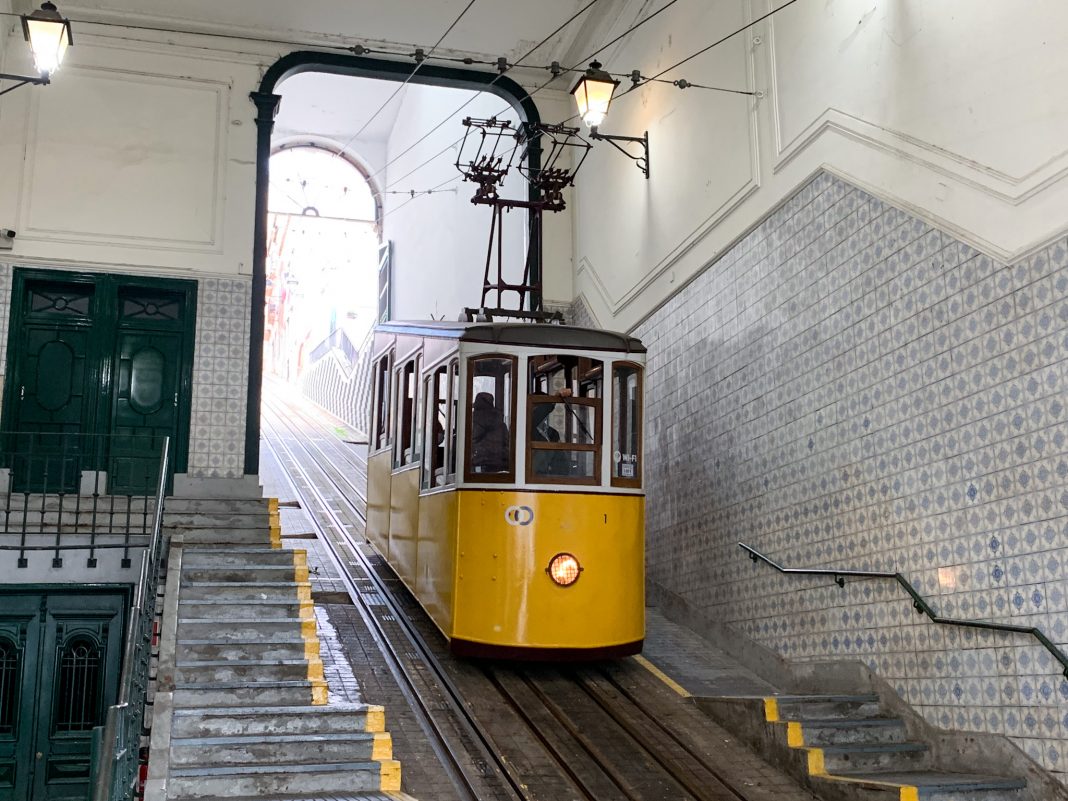
Depending on the length of your stay, you can purchase 24, 48 and 72-hour travel cards.
The Lisbon Card
The Lisbon Card gives visitors unlimited free travel on the buses, metros, trams, and elevadores. You can also use it on trains to Cascais and Sintra.
In addition, you get free entry into a large number of museums and monuments, plus other discounts. When you consider what it covers, the card is very reasonably priced.
Those who fancy it can also take advantage of the hop-on/hop-off bus and tram tours (which includes entry to the Santa Justa lift). This is perfect if you want to do a lot of sightseeing in a short time.
Porto
As Porto is a smaller city, the main sights are concentrated in a smaller area than in Lisbon. So it’s possible to see more in a short time, and much of the UNESCO World Heritage historical centre is best explored on foot if this is possible for you.
However, like Lisbon, Porto is a very hilly city in places. Indeed, around the suspension bridge and the Douro River, it is incredibly steep. So you may need to use a combination of public transportation to get around.
Porto operates a six-line metro system, handy if you also want to get up to the beaches north of the city. It also operates an extensive bus service.
However, depending on how long you plan to stay, and what you want to do, it might be worth purchasing a Porto Card.
The Porto Card
The Porto Card gives you free bus, train, and metro travel, as well as free entry to various museums and 50% off one of the port wine cellars.
Like Lisbon, Porto has a hop-on/hop-off tourist bus to service many of the top sights in the city (it also covers trams and the funicular). This might be the best way to sightsee if time is tight.
Which city wins? Both cities are very hilly, so you’ll most likely have to use some form of public transport there (although the vintage trams are especially fun!). But Porto just pips it for me in terms of ease of seeing the main sights on foot in a shorter space of time.
Porto vs Lisbon: weather
Lisbon
The weather is decent in Lisbon pretty much year-round. Still, it can be stiflingly hot in the summer season (temperatures reaching/going into the 30s Celsius is not unusual).
This is also the most popular time for people to visit, and therefore accommodation costs reflect this.
From November through to February, you may get rainy days, so the ideal time to visit would be either late spring (between March and June) or early autumn (from after when the schools go back in September through to early November).
Porto
Although the weather isn’t as good as Lisbon’s year round, like Portugal’s capital, the best time to visit Porto is late spring or early autumn. Again, this is partly because the weather is generally good during this time, but also because there are fewer tourists.
In the summer months, temperatures can regularly rise above 25 degrees Celsius. Between October and April, you should expect a fair bit of rain, so that’s something to consider depending on what you plan to do.
Which city is best for weather and climate? If you are basing your trip on the length of good weather and looking to do lots of things outside where you need favourable weather conditions, I would say Lisbon just edges it for me.
Lisbon vs Porto: the best time to visit for festivals and events
Lisbon
In recent years Lisbon’s popularity with visitors has grown. This means that in the summer months, it can become very crowded around the main tourist spots, especially when the city is hosting events.
However, as it is further south, the city’s weather is better than Porto’s, so it’s still possible to visit and experience some of the festivals outside of the main tourist season.
If you want to arrange your visit around notable festivals and events, a few might draw your attention. For example, in February/March, there is a Brazilian-style carnival.
June is also a good month to visit because the nation celebrates the trio of Saints’ days: Antonio, Joao, and Pedro. The biggest of the three is Santo Antonio (also unofficially known as the festival of the sardines). As you may have guessed, the streets come alive to the smell of grilled fresh sardines.
Like other cities, Christmas is another special time to visit. Lisbon hosts its own Christmas market in Praca Dom Pedro IV, and the streets have a magical feel with all the festive lights switched on.
Porto
Porto isn’t blessed with as good weather as Lisbon, so when you go depends a bit on what you want to do or the events that are taking place. On the plus side, although its international profile continues to grow, Porto doesn’t suffer as much as Lisbon regarding the volume of tourists that arrive in the summer months.
If you are looking to go when many of the top festivals and events are taking place, May through to September may be the best times, particularly as that’s when the weather is at its best.
June is when celebrations occur for the Popular Saints’ days, the largest taking place on 23rd June into the 24th. The city comes alive with music, decorations and fireworks. Early in the same month, the city hosts the Serralves Festival, a music, dance and theatre festival.
Of course, Christmas and the New Year are magical times in Porto, weather permitting. The city hosts New Year celebrations down by the river near the suspension bridge.
If this is something that you’d like to do, you will need to pre-book accommodation and other activities during this time. We went one year and loved it – but found that we made the mistake of not pre-booking a restaurant for an evening meal.
Which city wins? Again, this is a close one and depends on your interests. However, if you want to enjoy the traditional Portuguese festivals, Porto may just edge it in terms of experiencing this special time in a smaller, more intimate environment. But, if you don’t mind crowds then Lisbon is also a good option.
Porto or Lisbon: day trips
Both Portuguese cities provide easy access to other nearby destinations.
From Lisbon
There are many highly recommended places worth visiting within easy reach of Lisbon, but two of the closest are Cascais (and nearby Estoril) and Sintra.
Visit Cascais and the Atlantic
Catch a train from Lisbon’s Cais do Sodre train station, and you should be in Cascais in around 40 minutes. This is a perfect place if you fancy leaving the city and going to a small town and getting some fresh sea air.
If you have time and fancy a coastal walk, get off a few stops earlier at Sao Joao Estoril and wander down to the beach (you may need to ask for directions from the station).
Once you have descended a steep stone staircase, you can walk to Estoril and onto Cascais.
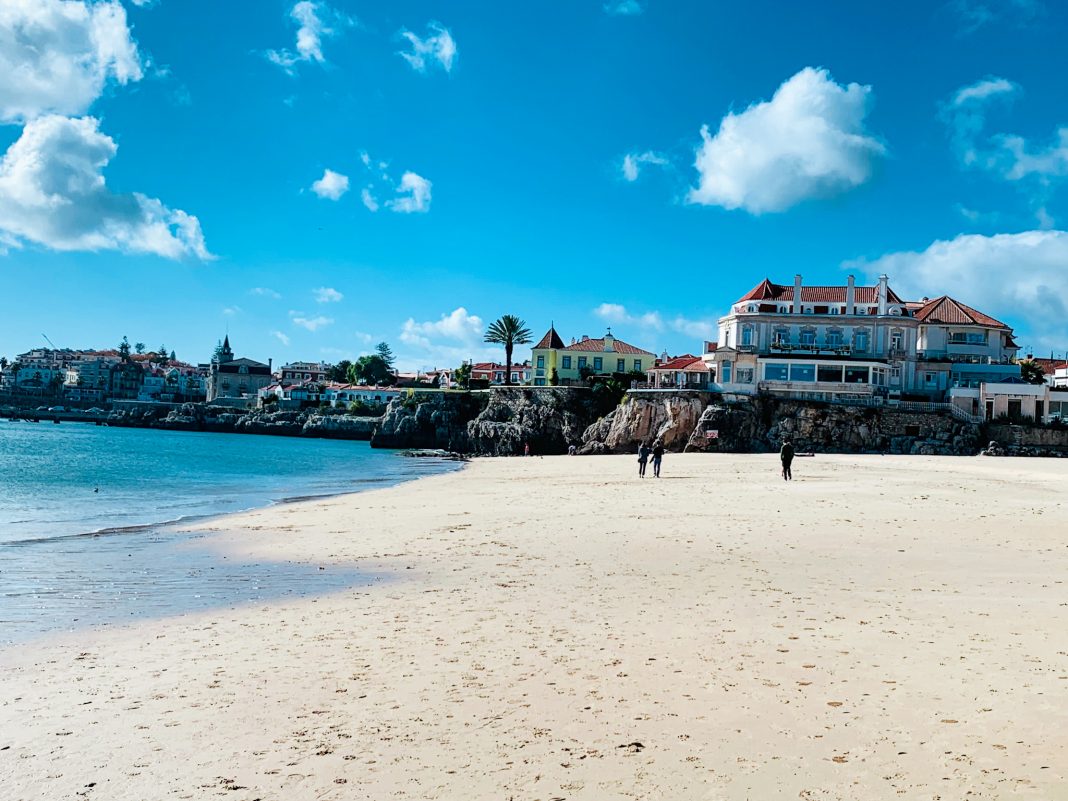
This small coastal town is a gateway to the Atlantic Ocean, and beyond it, there are some other spots north along the coast. These include the sweeping Guincho beach and Cabo Da Roca, with its lighthouse.
Experience Sintra with its Moorish Castle and colourful mountain top palace
Sintra is a great place to visit.
Take the train from Lisbon’s Rossio or Oriente train station, and a 40 to 50-minute journey takes you to the elegant town of Sintra. This romantic getaway feels a world away from Lisbon and its palm trees, thanks to its lush green landscape and mountainous backdrop.
Overlooking the town are two notable landmarks: the 10th-century Moorish Castle (Castelo dos Mouros) and the eye-popping and multi-coloured Pena Palace. If you have time, a trip here won’t disappoint.
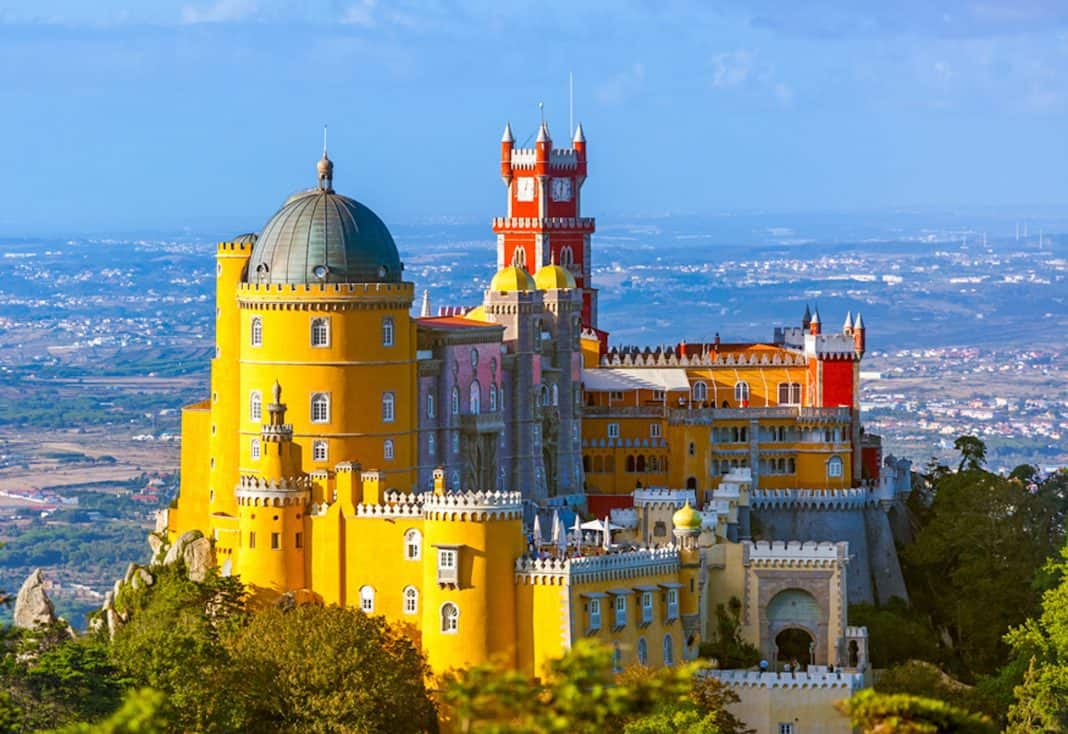
Dip into Portugal’s royal heritage at Mafra
Located around 40 km northwest of Lisbon, the undoubted highlight of Mafra is the Baroque Palácio de Mafra National Palace. This was built by kings using gold brought from Brazil.
The best way to get to Mafra from Lisbon is by using the Lisbon-Ericeira bus route.
Ericeira is a fantastic coastal town close to Mafra that is also worth visiting if you want some sea air.
During the week, there are 18 daily departures to Mafra but fewer on weekends. Journey times vary, but the fastest bus ride (number 209) takes around 35 minutes. You pick this up outside Lisbon’s Campo Grande Station.
From Porto
There are plenty of choices for day trips from Porto.
Walk the coastal boardwalk at Foz do Douro
When the number 1 tram terminates, you can wander along the coast up to a 17th-century fort jokingly referred to as Cheese Castle (Castelo do Queijo) because apparently that’s what the rock it sits on looks like.
Along the way, you’ll pass beach bars, traditional cafes, and fine-dining restaurants, not to mention some enticing beaches to bathe at.
Take a boat or cruise up the Douro
If you have the time, a boat trip on the Douro is a great way to see some of the local landscape and get some rest and relaxation after walking around the city centre.
A Douro Valley tour allows you to explore the vineyards where Portugal’s famous export originates, and a wine tour often comes with lunch and tastings as well as a river cruise.
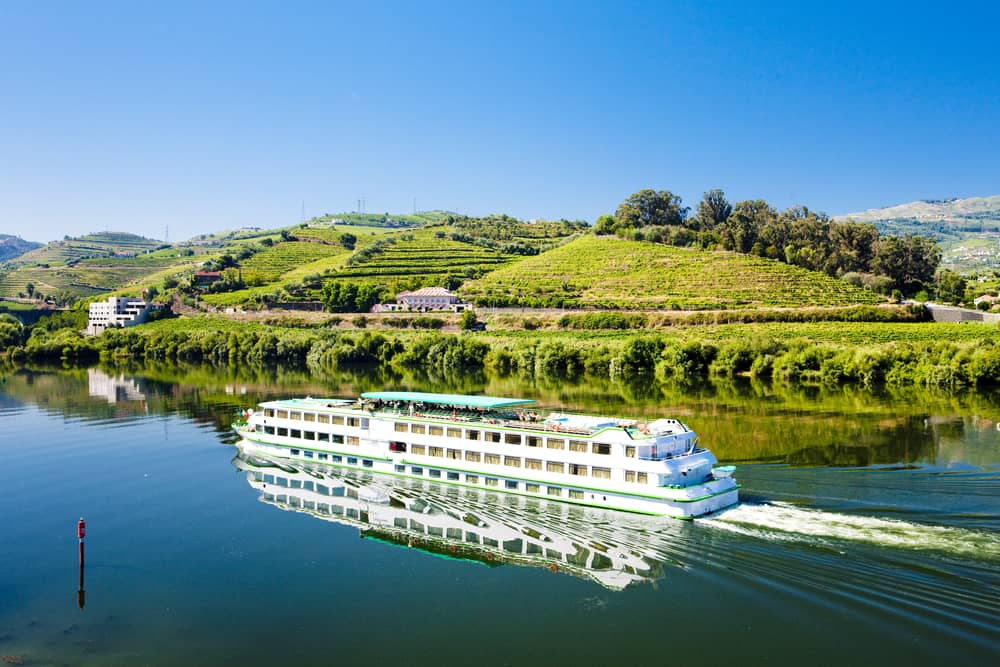
Visit Aveiro, Portugal’s Venice.
Only an hour’s train journey away, this picturesque seaside town has a small canal network where you’ll see elaborately coloured boats similar to gondolas plying the waters.
Located next to a lagoon, as well as some attractive architecture, beach enthusiasts will find some great stretches of sand nearby.
Travel to Guimaraes, the birthplace of the nation
Just over an hour’s train trip from Porto, this vibrant city is listed as a UNESCO World Heritage site and is where the nation’s first king was born, hence why it is sometimes known as the ‘Cradle of Portugal’.
Highlights include the 10th-century castle, the Palace of the Dukes of Braganza, and its historical centre.
Explore Braga and its stunning hilltop sanctuary
Braga is considered to be the nation’s religious centre, perhaps because Portugal’s first cathedral was built here. There are lots of historic buildings, including the cathedral, as well as notable sights such as the sweeping central plaza (Praca da Republica).
The icing on the cake, however, is the scenically dramatic hilltop sanctuary Bom Jesus do Monte, just outside Braga and easily reachable by bus. The journey time from Porto to Braga is around an hour.
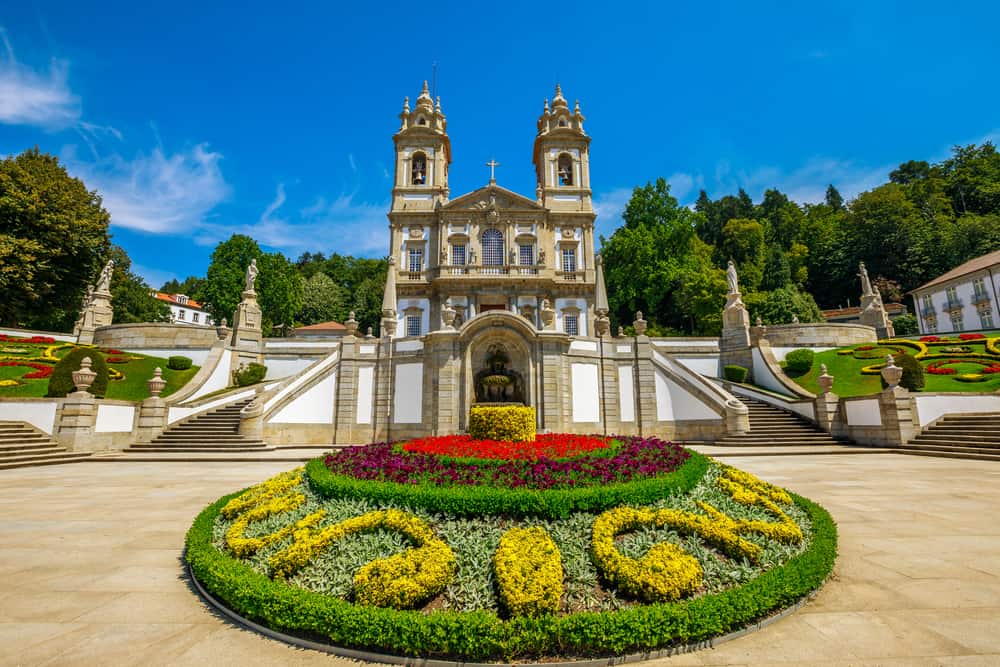
See Portugal’s oldest university in Coimbra
This scenic and historically significant city is where you’ll find Portugal’s oldest university and one of the first universities to be founded in Europe. The university, together with Rua da Sofia and the upper part of the city, has been awarded UNESCO World Heritage Status.
There is a lot to do in Coimbra, and you could easily take an entire day exploring the highlights. Direct trains from Porto take just over an hour.
Which city is top on this score? This is a really hard one because both cities offer the visitor fantastic day trip options for exploring further afield. I would say that they are evenly balanced.
Porto or Lisbon: unique attractions
In addition to the main sights highlighted above, both cities also have some unique and quirky sights worth putting on your itinerary.
Lisbon
Lisbon has many unique attractions.
Unique things to do in Lisbon
Ride the iconic 28 tram
If you are going to ride any of the old rickety yellow and white trams in Lisbon, this is the one! Start in Lapa outside the Basilica da Estrela cathedral; stay on until you reach Largo da Graca. You’ll enjoy a really scenic tram ride, passing through or near the Portuguese Parliament, Praca Luis de Camoes, Lisbon’s cathedral, and Alfama on the way.
Visit the quirky Chinese Pavilion
Situated on the edge of the Bairro Alto area, the discrete Pavilhao Chines sits behind a red door and is like no other bar you have visited (it’s one of our favourites!). Manned by sharply dressed waiters and waitresses, this unique bar comprises interconnected rooms with large glass cabinets containing a dazzling array of antiques, toys, and military memorabilia. The end room has several pool tables.
Sample a cherry brandy on the street
You can buy a delicious cherry brandy called Ginjinha in shops and duty-free. However, in the Baixa area, there are two small, beautifully decorated kiosks where you can buy a small (ridiculously cheap) shot of this traditional liqueur and drink it on the street.
Ride the iconic yellow and white funiculars
Lisbon has two you must experience. The Elevador da Gloria runs from Praca dos Restauradores up to Bairro Alto. The Elevador da Bica, is only a short walk from the Mercado da Ribeira and the Time Out food market and takes you up to the Bairro Alto.
Soak in the scenic views from a unique vantage point
There is no shortage of places to enjoy panoramic views of Lisbon. But one of the best viewpoints is the Miradouro da Graca. Located in Graca, it gives you spectacular views over the Baixa, the Christ statue, and the suspension bridge. Facing it on the opposite hill is the Sao Pedro de Alcantara Miradouro. From here, you get fabulous views of the castle and the Baixa.
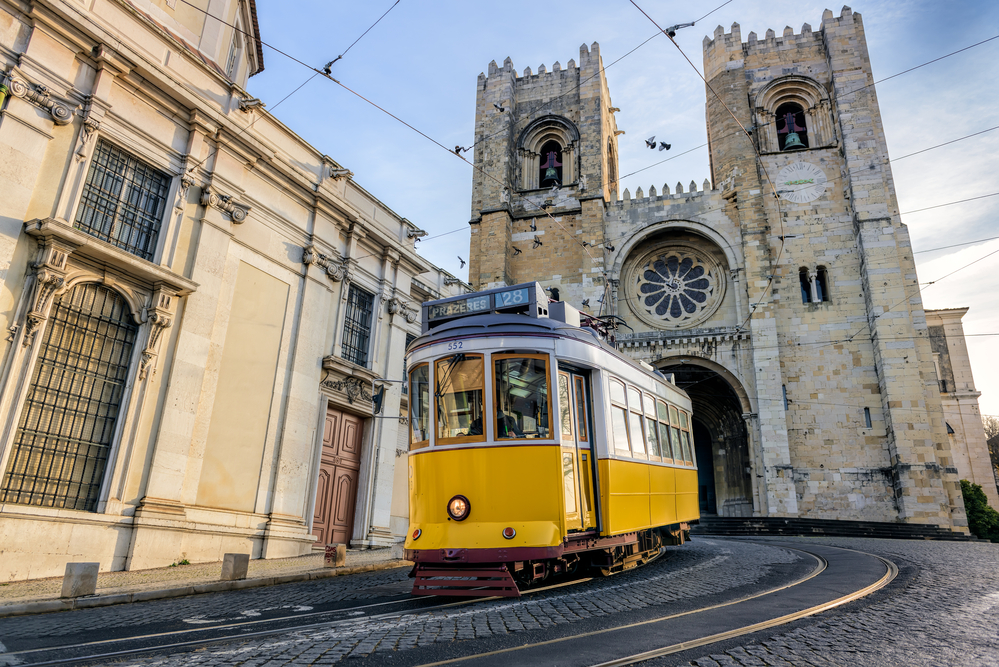
Porto
There are also many unique things to add to your Porto itinerary.
Unique things to do in Porto
Take a boat or cruise up the Douro
If you have time, a boat trip on the Douro and up the Douro Valley, are highly recommended. This allows you to explore the vineyards where Portugal’s famous export originates. A wine tour often comes with lunch and tastings.
Discover Porto’s Harry Potter connection
JK Rowling, author of the Harry Potter series, taught English in Porto. When she lived here, she visited an old bookshop called Livraria Lello. This is notable for its amazing twisting staircase, from which she drew inspiration, and a pretty stained glass skylight on the top floor. You can see these for yourself if you buy a ticket in advance.
Enjoy the monastic views
On the Villa Nova de Gaia side of the River Douro above the cable car station, there’s a former monastery called Mosteiro da Serra de Pilar. This elevated vantage point offers tourists wonderful views of the city skyline, the suspension bridge, and the river traffic below.
Find out about one of Portugal’s great explorers
A short walk down from Praca Infante Dom Henrique, with its statue honouring the explorer Henry the Navigator, you’ll find the house where the city’s famous son is said to have been born. Casa do Infante features an exhibition about his life.
Eat hot pastel de nata straight from the oven
Located within sight of the Torre dos Clerigos you’ll find the charming bakery Manteigaria. You can eat piping hot pastel de nata showered in cinnamon, and knock it down with a thimble full of Portuguese cherry liqueur.
Book a port lodge tour
As you stand on the Ribeira side of the river, you’ll see the names of famous port producers in Villa Nova da Gaia, marking where their port lodges are located. These include Cockburn’s, Croft, Sandeman, and Taylor’s, to name just a few. This is one of the must-do things when you are in Porto.
Lisbon or Porto: food and drink
Lisbon
Lisbon is a big city and has the historical influence of the Moors and more recent immigrants. You will therefore be spoilt for choice when it comes to finding a range of tasty food.
Then there is Portugal’s famous salted cod (bacalhau), which apparently can be found in more than 300 dishes.
There are many places in the city where you’ll find great restaurants, cafes and bars. Here are just a few to whet your appetite.
Cafés
As cafés go, you will find many fantastic little spots selling cakes scattered around Lisbon. However, there are two that I would recommend.
The first is the Café a Brasileira near Praca Luis de Camoes in Chiado, which serves fabulous cakes alongside various snacks and tea and coffee. You can sit outside or marvel at the decoration inside.
Another is the Confeitaria Nacional, one of Lisbon’s oldest café establishments.
For something truly special, visit the Belem area and the Pasteis de Belem café.
Here you can enjoy freshly baked custard tarts made from a secret recipe. As this is the original producer of the nation’s beloved custard tarts, it is also the only place where they are not known as Pasteis de Nata.

On our last visit, we noticed more and more shops in the city popping up selling custard tarts. But for the real thing, you should go to Belem.
Bars and restaurants
Lisbon is blessed with a fabulous culinary scene, and there are lots of spots with outstanding views.
However, for one particularly special one, check out Chapito a Mesa near the castle. Here you can look out over the Baixa, see the River Tagus sparkling in the sun, and admire views of the Christ statue and the suspension bridge.
Located right next to the huge indoor market (Mercado da Riberia), the Time Out food market is a vast complex that offers a unique dining experience. It caters to both fine diners and also those looking for a quick snack. There’s lots of varied and good food to choose from.
And for bars and nightlife, visit Doca de Alcantara, in the shadow of the huge suspension bridge. This former industrial area has been transformed into a major entertainment centre with cafes, restaurants, and clubs.
Porto
Porto also has an incredible culinary scene and a superb range of bars and cafes. As it’s in northern Portugal, you will find some variations in the traditional Portuguese food on offer.
Like Lisbon, Porto is not from the Atlantic, so plenty of seafood options exist. However, the city also benefits from being near Douro vineyards and the rich pickings to be had in the form of fresh produce from the fertile mountains near the city.
I never tried it, but one of the popular snacks is the Francesinha sandwich. This is hot meat layered with melted cheese and a spicy sauce.
Cafés
As far as cafés are concerned, you’ll find lots of little outlets throughout the city, but two definitely worth visiting are Café Guarany and Café Majestic.
Located on the left side of the city’s central plaza, the former is a classy café and restaurant with lots of charm. When you step through its doors, you really do feel like you have stepped back in time to the 1930s. The seating area is extensive and an ideal spot to sit and relax.
Café Majestic is only a ten-minute walk from the central plaza, on the busy shopping street Rua Santa Catarina. Again there is a fantastic selection of cakes and other mouth-watering delicacies on the menu.
Bars and restaurants
Porto has many nightlife spots, but one worth heading to is the three streets near the bookshop Livraria Lello on Rua das Carmelitas where you will find lots of funky watering holes.
There are also lots more – along with delicious food in the eateries – scattered in the surrounding areas, such as just north of Praca Carlos Alberto. One of the interesting bars we found was Bonaparte Downtown, which is listed among Time Out’s highlights.
One of the top dining experiences in Porto involves sitting on the quayside at one of the fantastic restaurants dotted along the promenade at Ribeira. There is a great atmosphere here and fabulous views of the suspension bridge.
Port tours and tasting
And of course, a trip to Porto would not be complete without delving into the city’s rich port wine heritage. The Villa Nova da Gaia side is one of the best places to head to. You are spoilt for choice here as the port lodges are located here.
You can book tours around some of the lodges – as well as other foodie experiences in Porto – here.
We booked with Cockburn’s, and it was a brilliant experience with a tasting at the end.
You don’t however have to go to the cellars to taste the port. You can also do tastings at other places around the city.
One of our favourite haunts was the cosy Wine Box Porto. This is situated just up from Praca da Ribeira, right by the entrance to the car tunnel.
Which city is best for food and drink? Again, another hard comparison. Both have wonderful fresh food and great places to eat and drink. Lisbon also has its Time Out food market.
Beyond that, it might depend on your culinary interests and tastes. And if you don’t drink alcohol, there might be a limited draw of the port lodges in Porto.
Lisbon or Porto: budget
Lisbon
Despite its increasing popularity as a holiday destination over the years, Lisbon is remarkably still a relatively inexpensive place to visit in comparison to other European cities, according to Conde Nast Traveller citing the annual Post Office City Costs Barometer.
Of course, this does depend on where you stay and where you choose to eat out. However, if you get away from the tourist hot spots, you can eat well and relatively cheaply. Also, public transport is really good value for money.
Porto
If Lisbon remains excellent value for money as a tourist destination compared to other European city breaks, then Porto is just a little behind (it comes in 6th on the same ranking). Again, it depends on where you stay and what you do, and therefore it’s pretty difficult to do like-for-like comparisons.
Which city wins? Lisbon obviously wins, given its top ranking on the list of European’s most budget-friendly city breaks.
However, as Porto’s top attractions are located in a small geographical area and because it is arguably easier to explore the centre on foot, Porto is also value for money in terms of how far you can stretch your budget.
So overall, considering all of the above, which city wins? Which is the best city?
As someone who has visited both cities often, it’s impossible to distinguish between them because it depends on what you are looking for from a short break.
For example, if you are looking for a port wine experience, Porto is definitely the city for you. Likewise, if you want to check out the Harry Potter references.
However, Lisbon comes out on top if you like riding around on trams and funiculars seeing the city sights and the wonderful views. Also, there is a lot more to do in Lisbon, and what’s listed above is just scratching the surface. There is so much more that I could add.
Visiting both: train connections
If you are still deciding which city to visit, but you have the budget and the time, why not visit both, and then you can make your own comparison?
Should this interest you, the quickest option is taking the train. Although the TAP airline connects the cities in one hour, when you add in time to get to and from the airports and checking in, the train will be faster. It’s also obviously more environmentally friendly. However, whether you take the train or plane will really depend on your preferred travel style.
The distance between the two cities is around 340 km, and Portuguese Railways operates several train services. The best option is the high-speed Alfa Pendular service. This direct service can cover the distance in just short of three hours. Alternatively, you could take one of the intercity trains. These are slightly slower, but train tickets are cheaper.
This website has a wealth of really helpful information that will help you plan a trip. It has information on where to pick up the trains, web links to the train times and how you can enquire about the current cost for a ticket, depending on what option you decide to take.
Lisbon or Porto
Whichever city you choose in the Porto vs Lisbon debate, you’ll have an absolutely amazing time and wish you had more time to explore the things you don’t get around to doing. Both will give you plenty of food for thought and ideas to jot down on your list for your next trip.
Other ideas for short European breaks
For more ideas for short breaks in Europe, take a look at my website.
And if you have ideas for other places you’d like to see here, do get in touch with me at [email protected].
Article written by Emma Marshall and Nick Warburton


